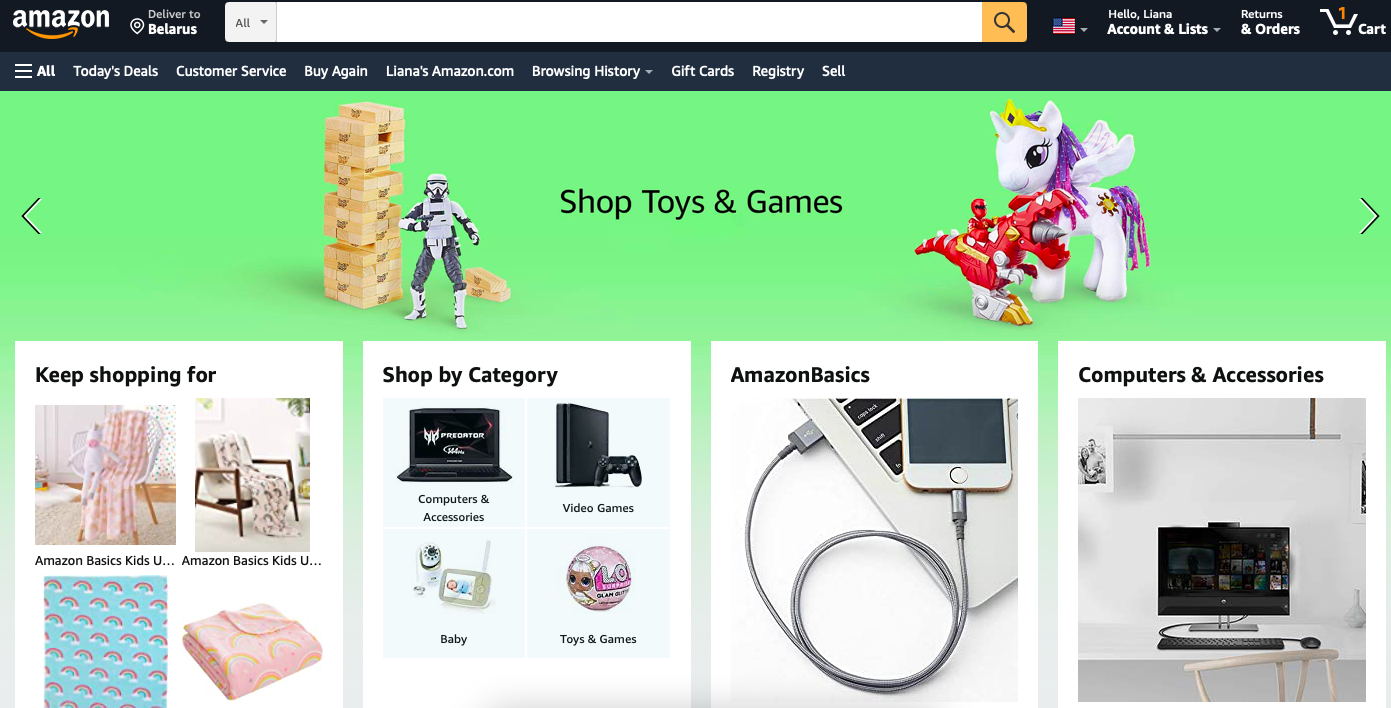Retailers can learn a lot from Amazon supply chain strategy. So let’s discuss what is the Amazon supply chain and how Amazon supply and demand works.
What is the Amazon supply chain?
Jeff Bezos and his organization have found a way to optimize almost every piece of the supply chain puzzle, from warehousing and inventory management to delivery times and pricing.
Sellers who sell on the Amazon Marketplace can choose from a variety of fulfillment options. Sellers can choose whether they want to handle order fulfillment or let Amazon sort, pack and ship products through their own fulfillment centers.

As a third-party seller selling on the Amazon Marketplace, you have the option to use Amazon’s fulfillment services:
- Amazon Fulfillment (FBA) – Sellers use Amazon Fulfillment for products sold on the Amazon Marketplace.
- Or sell using your own fulfillment (FBM) – sellers carry out the fulfillment of their products sold on Amazon
How Amazon supply and demand works?
Amazon has changed the way it informs suppliers about inventory demand by adding a new feature: probability demand forecast (available in both ARA Basic and Premium).
Suppliers are now being forced to make some important decisions that will directly affect their inventory levels for Amazon (and potentially affect the success of their entire business).
While demand will continue to be based on snapshots, sales history, and projected demand for planned promotions, there will now be three new probabilistic forecasts in the forecast from which the supplier can choose from:
- P70 – Means there is a 70% chance that Amazon will buy the specified demand level or less, and a 30% chance that they will buy more.
- P80 – Means there is an 80% chance that Amazon will buy the specified demand level or less, and a 20% chance that they will buy more.
- P90 – means there is a 90% chance that Amazon will buy the specified demand level or less, and with a 10% change they will buy more.
Components of an Amazon distribution strategy
Now let’s break down the individual parts of Amazon’s supply chain strategy, including:
- Warehouse services
- Delivery
- Technology
- Production
Amazon supply chain: warehousing
A big part of Amazon’s success lies in its expert warehousing strategy, which makes it easy to access products from almost anywhere in the world.
All of the company’s warehouses are strategically located close to major metros and communities, and inventory is distributed among them so that supply can meet demand. There are even mini-warehouses in small areas so that orders can be shipped and delivered quickly, no matter what is purchased.
Internal optimization of warehouses. The organization’s strategy allows team members and picking and packing robots to retrieve products almost instantly and move them in the direction of delivery.
Amazon supply chain: shipping
One of the biggest differences between Amazon’s supply chain strategy and that of other online retailers is the variety of shipping options it offers.
Of course, those options include free two-day Prime shipping and even a Prime Now option that gets items from point A to point B in two hours less. But what changes the rules of the game more?
Amazon uses a range of strategies – from the more traditional to the ultra-tech – to release its products in the shortest possible time around the world.
There are drones that land in your backyard or on your rooftop, there are Amazon trucks and vans, and even bicycle deliveries to certain areas.
The retailer also uses existing shipping routes through FedEx and UPS.
These broad-based strategies enable the company to get orders faster, easier and more efficiently from almost anywhere in the world – even in remote and rural areas that are not served by traditional means.
Amazon supply chain: technology
Amazon’s approach to supply chain management is based on technology. The company uses countless automated and robotic solutions for both picking and packing orders and stacking and storing inventory.
These tools not only increase company efficiency and delivery speed, but also reduce warehouse and personnel costs, freeing up funds for other logistics or supply chain needs.
The company has also embraced drones with the launch of Amazon Prime Air.
While the program is not yet fully operational, the drones will eventually provide 30-minute deliveries to some of the country’s largest markets.
All shoppers need is an Amazon-branded landing mat (and live within 15 miles of the nearest drone-equipped warehouse), and instant air delivery is within reach.
Amazon supply chain: manufacturing
Amazon still allows the use of third-party sellers, but the company seems to have realized that many of these third-party products can be produced much cheaper and more profitably. The retailer began making its own low-cost products as well as white-label products from other retailers.
Amazon offers branded lines in everything from household goods to pets and babies, and the list of labels continues to grow. This allows Amazon to own the entire life cycle of its products, from creation to marketing and storage to shipment.
Amazon global supply chain
While Amazon may have one of the most well-oiled supply chain strategies in the world, the company never rests on its laurels. The retailer is preparing to begin construction on its second headquarters, and its partnership with Whole Foods will change the rules for food delivery.
But what about sellers who want to go international?
Amazon operates 11 online marketplaces (websites) around the world, allowing merchants to grow their business internationally, no matter where their business is physically located.
0

